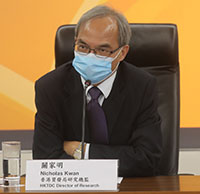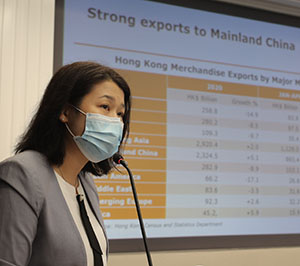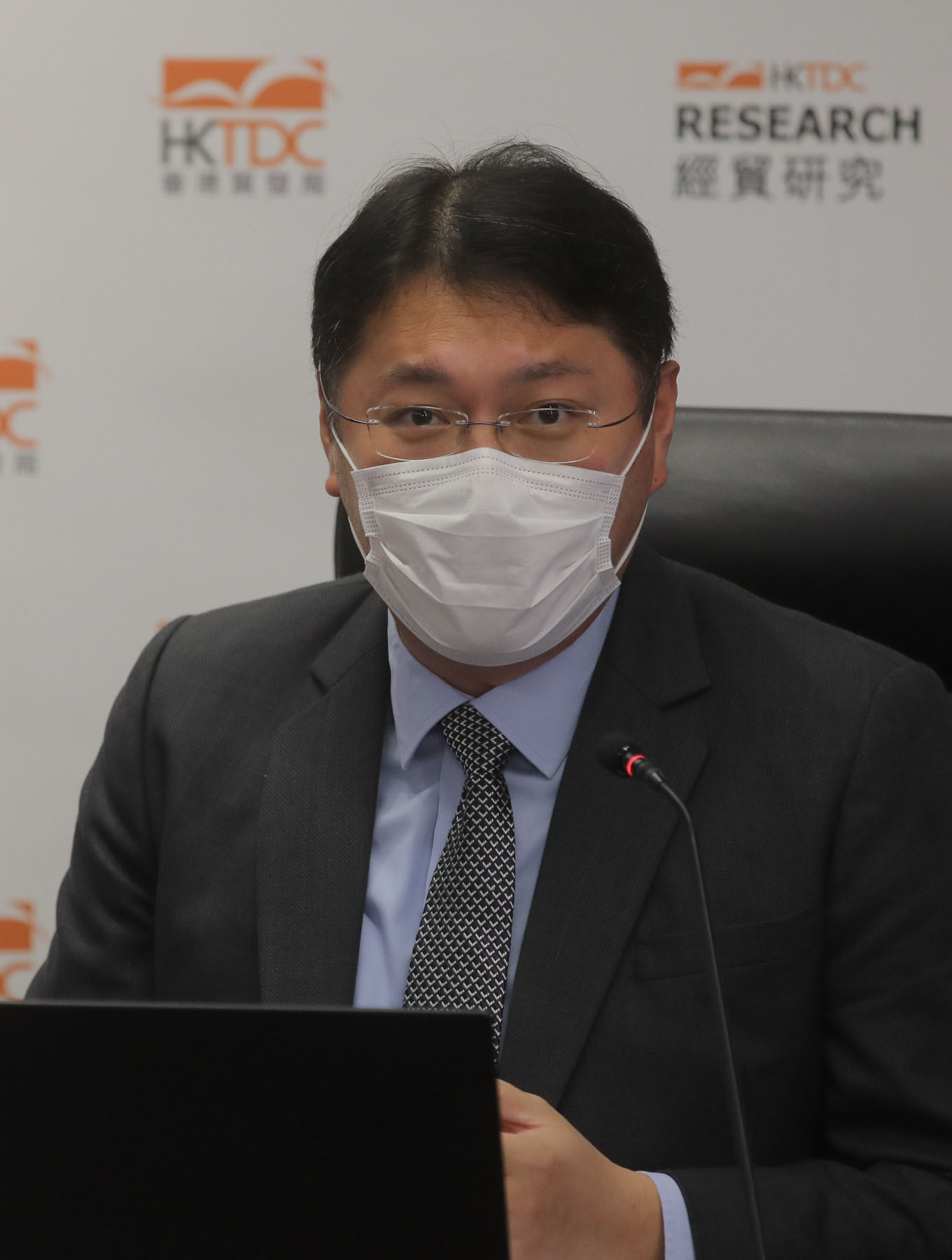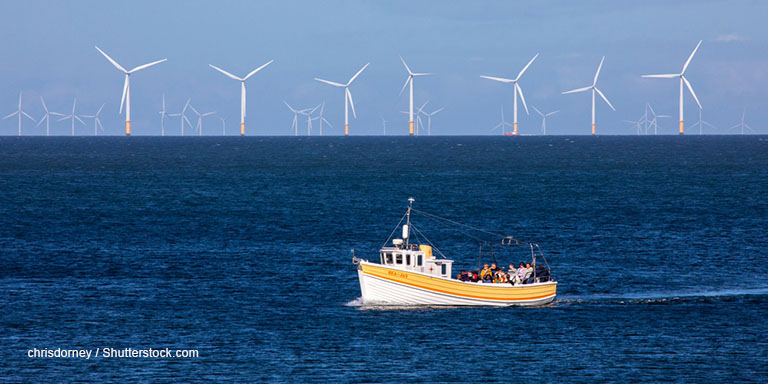
Hong Kong’s export outlook has greatly improved since the acute phase of the COVID-19 pandemic, according the latest indicators announced by the Hong Kong Trade Development Council (HKTDC).
The trade promotion body on Wednesday raised its forecast for the city’s 2021 export growth from 5% to 15%, the biggest rise since the rebound from the 2010 financial crisis.
The HKTDC also reported that its Export Index reached 48.7 for the April-June period, a huge jump from 39.0 in the first quarter and the record low of 16 registered during last year’s January-March period in the depths of the pandemic. The latest reading is just a whisker away from 50, the benchmark separating expansion from contraction.
The Council conducts the Export Index survey every quarter to gauge business confidence in near-term export prospects. The Index indicates an optimistic or pessimistic outlook, with 50 as the dividing line. Each survey interviews 500 local exporters from six major industries including machinery, electronics, jewellery, watches and clocks, toys and clothing.
At a news conference, the HKTDC also identified a number of promising sectors and markets for business expansion, including technology, innovation and sustainability in the Untied Kingdom, Italy, Austria and Poland.
Global revival
Reviewing the city’s latest trade performance, HKTDC Director of Research Nicholas Kwan said Hong Kong’s exports have grown significantly in recent months, buoyed by the global revival in trade and the resumption of production activities.
Exports in the first quarter of 2021 increased 33.2% year-on-year to HK$1.1 trillion, with growth of 24.4% registered in April. “Led by Mainland China and the United States, the global economy has rebounded steadily, which will continue to bolster Hong Kong’s export performance,” Mr Kwan said.
Meanwhile, the HKTDC’s Export Index survey showed that local exporters continue to have concerns. Worries include the persistence of the COVID-19 pandemic (41.5%), softening global demand (16.7%), prolonged trade tensions between the mainland and US (13.0%) and continuing pandemic-mandated border closures (11.6%).
“The global economic recovery is likely to be highly uneven. After taking into account a basket of factors, we decided to revise Hong Kong’s export forecast in 2021 upward from 5% to 15%, albeit from a low base. This represents the biggest rebound since the city’s recovery from the global financial crisis in 2010,” Mr Kwan added.
Smaller orders, higher costs
Mr Kwan pointed out that while concerns remain, the impact of the pandemic has gradually eased over the past few months. The percentage of respondents reporting that they had been negatively affected by pandemic-related issues fell from 78.2% in the first quarter of 2021 to 56.9% in the second quarter.
A reduction in order size (66.4%), increased transport costs (46.4%) and logistics or distribution disruptions (42.6%) were cited as the three most common problems, Mr Kwan said.
In addition to becoming accustomed to a new-normal of smaller orders and higher transport costs, Hong Kong businesses have adopted new strategies to weather these challenges such as developing other product categories (53.8%), developing the mainland domestic market (49.5%), developing online sales channels (45.5%) and targeting new overseas markets (28.4%), with the Association of Southeast Asian Nations (ASEAN) bloc and Europe the most popular choices for diversification.
14th Five-Year Plan
Mr Kwan said that China’s 14th Five-Year Plan, coupled with the “dual circulation” development model, aims to stimulate domestic demand in the mainland, presenting enormous opportunities for Hong Kong businesses. About 40% of exporters surveyed have developed or are intending to develop the mainland domestic market yet encounter challenges such as intense competition (81.8%), difficulties in selecting suitable local sales partners and/or distributors (47.4%), and problems with mastering the required sales channels (44.0%).
“The HKTDC has formulated strategies to help Hong Kong companies capture domestic sales opportunities through both online and offline channels. We can help them understand business regulations, master market trends, establish contacts and expand their sales network through a series of promotional activities and new services,” Mr Kwan said.
Markets, industries rebound
The HKTDC conducts the Export Index survey every quarter, interviewing 500 local exporters from six major industries including machinery, electronics, jewellery, watches and clocks, toys and clothing, to gauge business confidence in near-term export prospects. The Index indicates an optimistic or pessimistic outlook, with 50 as the dividing line.

HKTDC Assistant Principal Economist (Greater China) Alice Tsang said: “The Export Index rose by 9.7 points to 48.7 in the second quarter. In line with this, exporter confidence continues to improve across almost all industry sectors and major markets.”
As regards specific industries, machinery (up 13.0 points to 55.9) and electronics (up 9.8 points to 48.8) both outperformed the overall average. In terms of export markets, confidence in the mainland (50.3) returned to expansionary territory while a more optimistic sentiment was seen in Japan (49.8), the European Union (49.2), the ASEAN bloc (49.1) and the US (49.0).
Ms Tsang said improving export sentiment is further evident in an upward trend in subsidiary indexes, including the Trade Value Index (up 10.7 points to 57.0) and Procurement Index (up 11.9 points to 45.5). Employment sentiment, however, remained subdued (down 1.6 points to 41.6).
Winds of fortune
HKTDC Assistant Principal Economist (Global Research) Louis Chan shortlisted some opportunities for Hong Kong companies based on interviews with a number of consuls general and trade commissioners in Hong Kong.
With the United Kingdom, under the new tariff regime 47% of imported goods are tariff-free while the average tariff is as low as 5.7%. In addition, the UK has announced 10 new freeports as national hubs for trade, innovation and commerce, creating jobs, attracting businesses and encouraging investment to help drive the country’s post-Brexit growth, Mr Chan said. Collaboration opportunities exist in clean energy projects such as offshore wind power (main picture), smart-energy systems, sustainable construction, precision agriculture, green finance and electric-vehicle manufacture.
Italy was the first European country to be impacted by the pandemic, he pointed out. The Italian government launched its €222 billion (US$265 billion) five-year National Recovery and Resilience Plan to revive the country’s economy. The plan covers six areas including digitalisation, innovation, competitiveness and culture; the green revolution and ecological transition; infrastructure for sustainable mobility; education and research; cohesion and inclusion; and health. It is expected to add an extra 3.6 percentage points to Italy’s gross domestic product growth by 2026.

Italy’s northern neighbour Austria makes 40% of its investments in Mainland China through Hong Kong, while 70% of mainland investments in Austria are done through Hong Kong entities. Many Austrian brands eye opportunities in the Guangdong-Hong Kong-Macao Greater Bay Area (GBA) arising from the area’s expanding middle class and plan to access GBA and Belt and Road markets through Hong Kong. Last year, an Austrian fibre producer, making eco-friendly renewable products, achieved a historic first, sending textiles that were 100% made in Austria directly to the mainland on the China Railway Express.
Poland has the potential to become the digital heart of Europe despite uncertainties brought by the pandemic. In May 2020, Microsoft announced a US$1 billion, seven-year digital transformation investment plan in Poland, featuring the opening of the company’s first data centre in Central and Eastern Europe (CEE), in partnership with Poland’s leading cloud computing solutions provider, Chmura Krajowa. Around the same time, Google announced the launch of a new Google Cloud region in Warsaw, also a CEE first, with an investment of up to US$2 billion.
Mr Chan said Hong Kong companies producing tech products and services have a better chance to succeed in the post-pandemic market, citing areas such as 5G-related smart devices, clothing made with anti-bacterial fabric, the cold supply chain and e-health. He added that traditional products with a modern twist are also popular in niche markets, including proprietary intellectual-property linked toys, contemporary jade jewellery, at-home fitness gear and hiking equipment.
Related link
HKTDC Research


